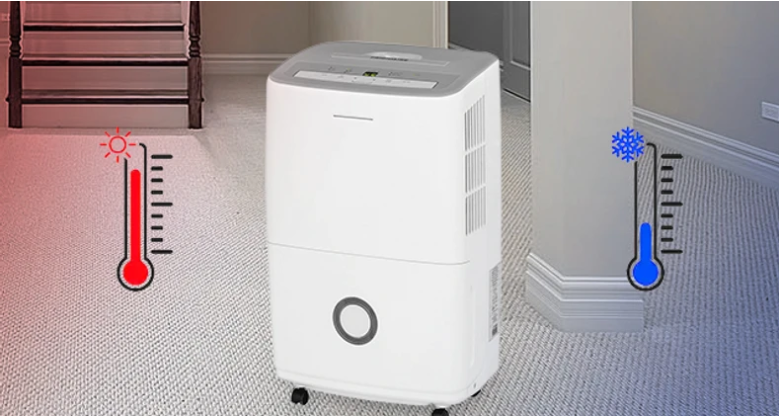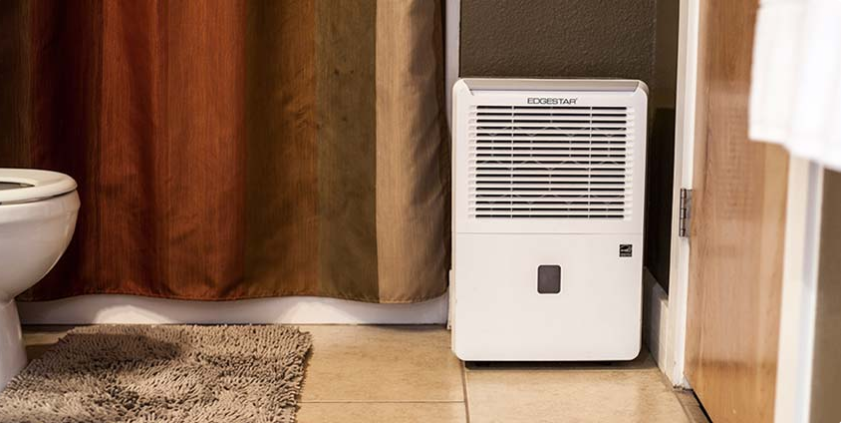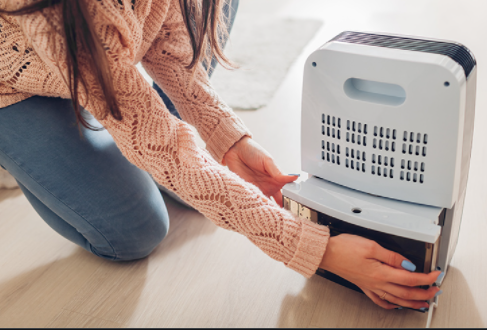If you have come across this article, you probably wonder how much water should a dehumidifier collect in a day. Whether your dehumidifier is collecting less water, it is natural to worry, but different factors play their role in the air extraction rate of air dehumidifiers.
If you are not sure that your dehumidifier is collecting the right amount of water or less; this article will assist you to comprehend the factors that affect the absorbing rate of an air humidifier.
What is an Air Dehumidifier?

An air dehumidifier is a device that extracts excessive water from the air by filtering it, either producing hot or cold air. However, the main concern with this device is how much water it can suck or for how long this unit can go on a stretch.
Well, this is an important aspect for the people who live near the areas where the humidity level is high. This is because, sometimes, a dehumidifier collects more water and sometimes less. It is because of the size and capacity of a dehumidifier as well as your room. However, the weather conditions also influence the working of this device. That is why the collection rate of water varies from device to device.
Factors Affecting the Moisture Extraction of Air Dehumidifier

In order to comprehend the dehumidifiers’ performance, you must understand that a dehumidifier takes time to achieve a specific limit. A power dehumidifier may achieve its capacity in 12 hours, whereas a small device may take a long time to balance the humidity level. Similarly, the below-mentioned factors influence the collection rate of a dehumidifier.
Dehumidifier capacity

The capacity of a dehumidifier is the first factor that influences the answer of how much water should a dehumidifier collect in a day? Actually, it comes in different capacities according to the size as well as the requirement of your home.
For example, a dehumidifier of 10L capacity has the ability to extract up to 5 liters per day. This is sufficient and ideal for homes that require minimal extraction per day. On the other hand, if you are living in a high humidity level area, you need a large volume extraction. The higher the capacity and power of the dehumidifier, the higher the amount of water collected.
Humidity
Humidity is a crucial factor or pain point of a dehumidifier. Higher humidity levels cause itchiness, irritation, and stickiness on the skin. It should be maintained between 30% to 50%, and it is the average humidity level of your room. Moreover, it will help figure out how many pints per day are required to remove excess moisture.
If the dampness level is high in your room, the small dehumidifier will extract around 10 to 20 liters, whereas large ones are capable of extracting up to 50 liters per day. However, if the humidity level is low, small dehumidifiers will collect 3 to 5 liters per day, and large dehumidifiers will extract 8 to 10 liters per day.
Air temperature
High air temperature causes water evaporation that results in high dampness near the sea or canal area. On the other hand, it is usually less damp in winters, even around the sea area. Similarly, a dehumidifier works more effectively when the air is warm. While an up or down of a few degrees does not make a considerable change in dehumidifiers working. Therefore, it is normal if your air humidifier is collecting less water in winters.
Room size
When does someone ask how much water should a dehumidifier collect in a day? How can one forget to mention room size and living space? A whole-house dehumidifier can extract a considerably high amount of water from the air compared to room dehumidifiers.
Whole-house dehumidifiers are larger, so they extract large amounts of water per day. Moreover, they have ample space to cover as well. A small humidifier usually stuck to 40 to 50 pints per day is the room size id 2000 square feet, whereas when the space is large, automatically it will collect more water.
Fan speed
An air dehumidifier uses a fan in order to take in or blow out the air. Many dehumidifiers come with different fan speeds that you can set according to your need. When the fan speed is high, more air will pass through the device, and more water will be able to collect.
However, if you keep the fan speed low, less air will pass through the device. Similarly, less water will be extracted. You are supposed to set the fan speed according to your need and the humidity level in the air. Hence, it has a direct relation to the collection of water per day.
How much Water Should a Dehumidifier Collect in a Day?
An air dehumidifier is a device that collects water from your air and reduces humidity. They collect water from the air by running it through the coils where condensation takes place and collects in internal reservoirs.
The majority of devices collect around 10 liters to 20 liters per day but it varies depending on the size of every device. This is because each unit has its own capacity and speed of extraction.
Furthermore, factors like relative humidity, ambient temperature, and power of the dehumidifier play a crucial role in their operation. Therefore, the higher-powered model with better cooling capacity generally produces more than 13 gallons of water if operated within several parameters.
Conclusion
Household dehumidifiers are an astonishing invention for home maintenance and balancing the humidity level. If you live in areas with a high humidity level, it is worth investing in one. These devices absorb the excess water from the air and provide excellent air quality to your room, making it comfortable to breathe.
You can consider the factors that we have mentioned above in order to determine how many should your dehumidifier collect each day.
